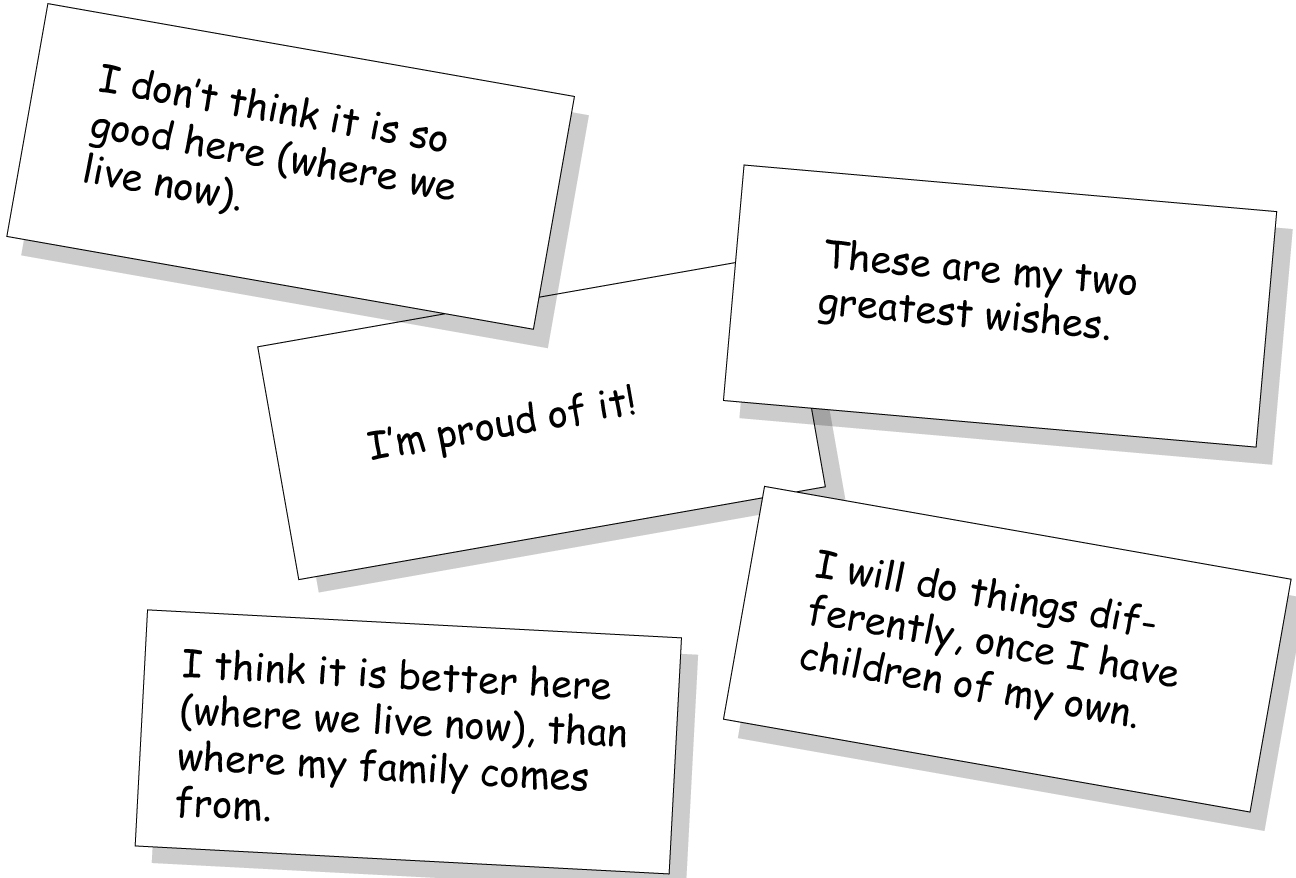Hints:
- We are not going to focus on uncontrolled, spontaneous telling of personal adventures and experiences, etc. here, as this should have its place in school anyway. This can occur in directed situations, such as the storytelling circle (see #17) or also totally unplanned, if a problem, an important experience, or a happy event will need to be discussed.
- No child should be pressured to to reveal personal feelings, adventures or experiences. Part of the nature and important characteristic of telling personal stories is its voluntariness. However, if a child remains silent for a longer period of time, the instructor should be concerned about the reasons and seek to remedy the situation.
Procedure:
- As an introductory impulse for discussion situations that involve personal thoughts, experiences and feelings,the instructor may hand out conversation cards or write a question on the board, which is then discussed. Example:

- A suggestion from the students can serve equally well as an introductory impulse for the conversation.
- Pictures or photographs can also be very good prompts for personal conversations.
- It is also a good idea to collect suggestions (possibly anonymous ones) in an envelope as a prompt for personal conversation rounds.
- Before the discussions, students should be afforded a few minutes to collect their thoughts and reflections, as well as to note possible language problems. See also #10 (How to prepare for a conversation).
- Perhaps a short practice round is needed before the discussion, in order to:
1. clarify language questions (e. g.terms in the first language),
2. review sentence building blocks or language means, suggested by the instructor, which could be especially useful (phrases, such as “In my opinion …”, “I find rather that …”) and
3. a reminder of important conversation rules, e. g.“I listen attentively”, “No one will be laughed at because of his/her opinion”, “I will not interrupt anyone” etc. (see #9). - The discussion of the question can first occur in pairs or also directly involve a larger group (group level or entire class).






